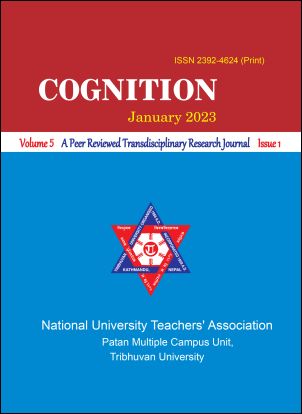Conceptualizing Central Tendency and Dispersion in Applied Statistics
DOI:
https://doi.org/10.3126/cognition.v5i1.55408Keywords:
Mean, median, mode, statistical analysis, standard deviationAbstract
In any research to summarize the huge collected data for describing its characteristics, frequency distribution or histogram are used to reduce the heap of data. Thus, the collected data can be summarized as a single index or value representing the entire data that facilitate data comparison. Statisticians use a variety of numerical measures or indices in order to summarize data in a concise yet informative manner. The other way of representing the bunch of data is the tabular, diagrammatic and graphical approaches that visually illustrate the unorganized data. However, these techniques can not be enough to explain the quantitative data. Thus, statistical analysis is required to determine the various numerical measures that describe the inherent characteristic of frequency distribution. There are many methods of describing the characteristics of the collected data. The averages are the measures that condense a huge unwieldy set of numerical data into single numerical values which are representative of the entire distribution. Measures of dispersion show the information about the amount of variability or deviation or scatteredness or variation of the data from the average or central value. Thus both measures are used to interpret or analyze the data in academic and quantitative research.




